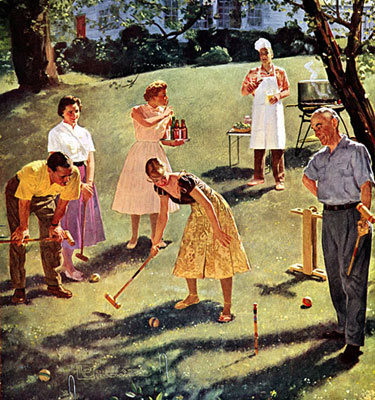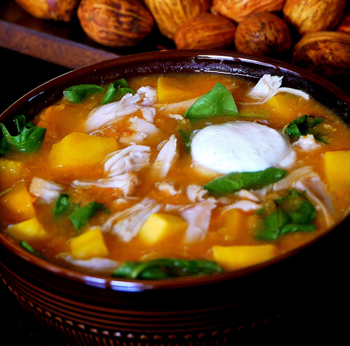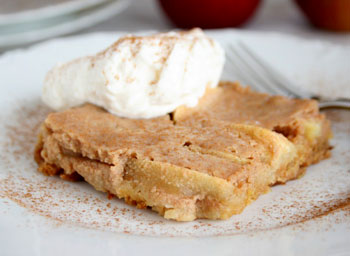 German grandmothers mixing up sweet yeast dough to form coffee cakes filled with fresh fruit of the season and rich, creamy custard made with real cream have been passing along the kuchen tradition for generations.
German grandmothers mixing up sweet yeast dough to form coffee cakes filled with fresh fruit of the season and rich, creamy custard made with real cream have been passing along the kuchen tradition for generations.
If authentic kuchen, which is a German word for “cake,” has been a common thread weaving through your family for decades, you probably won’t appreciate this recipe. The only kuchen my family eats comes to our table as a gift from an expert peach kuchen-maker who works with my husband.
The simplicity of this Quick Apple Kuchen recipe caught my attention as I browsed through an old cookbook I inherited from my mom’s extensive library. The book is so old, it refers to margarine as oleo. Up until 1952, U.S. law required margarine producers to label their product “oleomargarine.” But, the book is not so old that bakers couldn’t find cake mix in their grocery store.

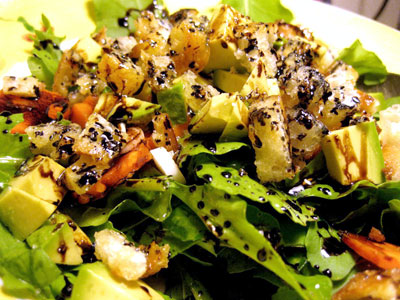 When you're pressed for time, the last thing most people want to do is cook. Coming home after a hard day at the office or dealing with kids and errands, the kitchen can seem unwelcoming.
When you're pressed for time, the last thing most people want to do is cook. Coming home after a hard day at the office or dealing with kids and errands, the kitchen can seem unwelcoming.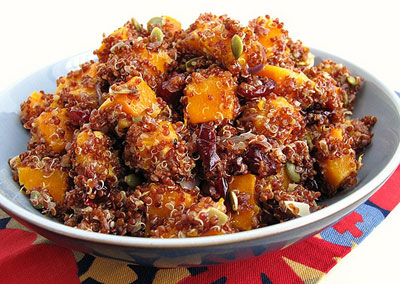 I first heard of quinoa many years ago from a friend who was diagnosed with wheat sensitivity. Quinoa, which is the seed of a flowering plant, is related to spinach and beets. It is not a grain, but is treated like one in recipes. It is suitable for those who suffer from celiac disease and maintain a gluten-free diet. The pseudocereal, as it is officially termed, originates from the Andean region of South America. It was considered sacred in Incan society, second in importance to the potato, and followed by corn. The Spanish conquistadors disliked quinoa, suppressed its production, and it never gained popularity outside of South America.
I first heard of quinoa many years ago from a friend who was diagnosed with wheat sensitivity. Quinoa, which is the seed of a flowering plant, is related to spinach and beets. It is not a grain, but is treated like one in recipes. It is suitable for those who suffer from celiac disease and maintain a gluten-free diet. The pseudocereal, as it is officially termed, originates from the Andean region of South America. It was considered sacred in Incan society, second in importance to the potato, and followed by corn. The Spanish conquistadors disliked quinoa, suppressed its production, and it never gained popularity outside of South America. Did you know the "Whoopie pie" is the State Treat of Maine? I had no idea states had designated treats. I'm dying to know what the state treat is here...it better be candy bacon.
Did you know the "Whoopie pie" is the State Treat of Maine? I had no idea states had designated treats. I'm dying to know what the state treat is here...it better be candy bacon. I work at home. Translation: I love a distraction. The kitchen? Definitely the number one destination for diversion. Even on days when recipe developing is not on my to-do list, I like to wander in to my favorite room and concoct a little something every few hours. Something quick, something that might work for our dinner later. Even better, something that might last for a few days.
I work at home. Translation: I love a distraction. The kitchen? Definitely the number one destination for diversion. Even on days when recipe developing is not on my to-do list, I like to wander in to my favorite room and concoct a little something every few hours. Something quick, something that might work for our dinner later. Even better, something that might last for a few days.